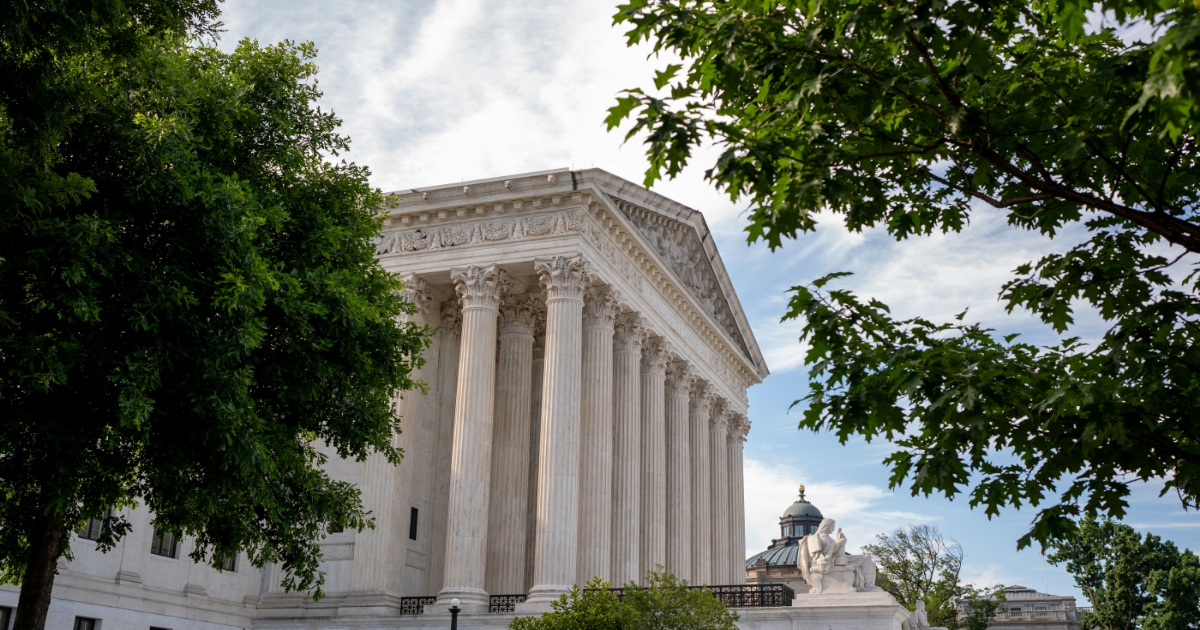
The U.S. Supreme Court on Friday sided with the Trump administration, at least for now, in a dispute over the Department of Education’s freeze of DEI-related grants. The administration has taken several grievances to the high court recently, but this was the first of its legal theories to stick.
By a 5-4 vote, the justices allowed the administration to temporarily freeze $65 million for teacher training and professional development. This comes about a month after a similar dispute in which the High Court left in place a lower court order to pay USAID contractors for services already performed.
The Education Department had frozen the grants in anticipation of trying to claw back unspent funds that had been appropriated Congress.
A federal district judge had issued a 14-day temporary restraining order to consider the question. While such 14-day stays are rarely appealable, the Supreme Court majority viewed this case differently, and granted the administration’s request to block the lower court order from going into effect.
Chief Justice John Roberts noted his disagreement. The other three dissenters—Justices Elena Kagan, Ketanji Brown Jackson, and Sonia Sotomayor—were more pointed. They noted that not only was the temporary restraining order about to expire anyway, but the court was, in Kagan’s words, making a mistake by making significant changes in the law with a barebones briefing, no argument and scarce time for reflection.
The Education Department funding went to two grant programs targeting teacher shortages. Recipients include “high need” institutions, nonprofits, Historically Black Colleges and Universities, and Tribally Controlled Colleges and Universities.
The Department of Education cut nearly all of the existing grants in February, notwithstanding the fact that Congress had already appropriated the funds to be spent for these specific purposes. The administration said it eliminated 104 of 109 grants because they “fund discriminatory practices–including in the form of DEI.”
The Department also sent letters to the recipients stating that their programs violate federal Civil Rights laws by discriminating based on race, sex, or other protected characteristics.
Appeals court had kept TRO in place
Eight states whose universities and nonprofits had their grants terminated–California, Massachusetts, New Jersey, Colorado, Illinois, Maryland, New York, and Wisconsin–sued in federal district court. The challengers argued that the Department of Education’s decision to cancel the grants violated federal law. In response, the government argued that it was well within its broad regulatory authority to cancel the grants because the so-called “DEI initiatives” were no longer aligned with government policy.
A federal judge in Boston issued a temporary restraining order, which reinstated the funding for up to 28 days while he considered the states’ claims. After a failed attempt to overturn the order in the federal court of appeals, the Department of Education asked the Supreme Court to stop the lower courts from reinstating the grant money, at least for now.
The Department insisted that it should not be forced to continue funding millions of dollars in “taxpayer money that may never be clawed back” while the lawsuit plays out in the courts. It pointed out that, even if it eventually wins this case, it would have a hard time getting the millions in federal dollars back now that the “federal funding spigots” had been turned back on.
The eight states that are part of the lawsuit against the administration countered that it would make little sense for the Supreme Court to intervene at this stage, given that the grant reinstatement would expire soon anyway. And, they pointed out, the order’s limited shelf life gave grant recipients little time to continue receiving government funds. In that sense, the schools would be getting a drop in the bucket compared to the government’s image of a “funding spigot.” And that would still be less than they were promised in their five-year grant.
The Supreme Court didn’t see things that way, and instead sided with the Trump administration, delivering a major win to an executive branch trying to amass greater power as it continually clashes with the lower federal courts.
The government has also asked the high court to block lower court actions in other legal disputes impeding its agenda. One lower court reinstated 16,000 previously terminated federal employees. Another court stopped the administration from denying birthright citizenship for some children born in the United States, a case in which the government complained at length about the use of universal injunctions, a wide-reaching order that applies to everyone impacted across the country. More recently, the administration asked the court to allow it to continue deporting U.S. residents that it alleges are Venezuelan members of the Tren de Aragua gang.
Bubbling under the surface in these cases is the government’s ongoing critique of sweeping court orders that bind the administration’s actions beyond the confines of the courtroom. Judges’ grants of nationwide relief have been a thorn in the administration’s side since Trump took office in January. In fact, the increased prominence of court orders that apply nationwide really took off in the first Trump administration when courts often blocked the administration’s plans. The same thing happened in reverse when judges often blocked Biden administration plans. And now, with Trump moving at high speech to dramatically change long established policies and procedures, he is again chafing at court actions that get in his way.
This is a developing story and will be updated.
